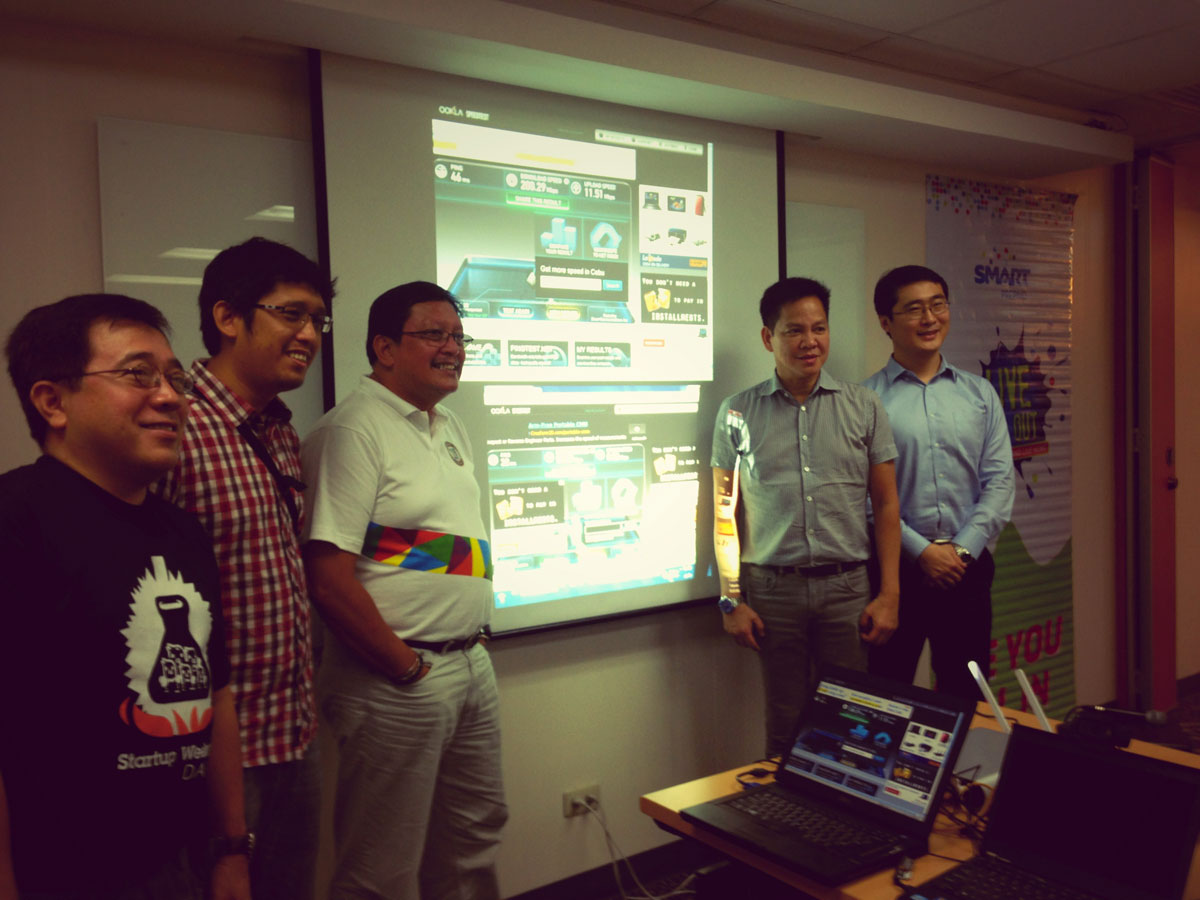DAVAO CITY-After hitting LTE Advanced download speeds in excess of 200 megabits per second (Mbps) during tests in Manila, Smart Communications Inc. held another test in Davao City last Saturday.
PLDT and Smart Technology head Rolando Peña said he scheduled the test in Davao to show that the company’s network is able to deliver LTE Advanced throughout the country.
“I want to be able to tell my board of directors that I have personally tested the network up to Davao and that we are able to deliver the next generation LTE on a nationwide basis. To me Davao is the biggest challenge because it traverses several land-sea-land-sea type of combination,” Peña said during the test at the PLDT office in this city.
Peña stressed the importance of the company’s fiber network which spans about 71,000 kilometers. He said the “Philippines’ most extensive fiber network” is what enables them to deploy advanced networks.
LTE Advanced speeds
Saturday’s test was attended by journalists and government officials, including a group from the Brunei Darussalam-Indonesia-Malaysia-The Philippines East Asean Growth Area (BIMP-EAGA).
“We are introducing the next generation LTE. And the next generation LTE is capable of doing theoretical speeds of more than one gigabit per second wirelessly and practical speeds of about 700 megabits per second,” Peña announced before the test of what he said was the “first level of the next generation of LTE.”

LTE ADVANCED DEMO. PLDT and Smart Technology head Rolando Peña (2nd from right) and Huawei Philippines wireless division head Li Zhi Chao pose with a projection of a speed test on an LTE Advanced network demonstration in Davao City. With them are Davao City Councilor Leo Avila III (3rd from left), the chairman of the committee on transportation and communications, his son Lester, a gamer, and Bert Barriga, executive vice president of ICT Davao. (Photo by Max Limpag)
Peña said the current LTE is capable of “practical download speeds of about 65 Mbps.” The first level of the next LTE is capable of more than thrice that, he said.
During the test conducted by Smart and a team from Huawei Philippines led by wireless division head Li Zhi Chao, they were able to hit download speeds of up to 214Mbps. Allan Siao of Smart Access Planning then demonstrated the download of a 100-megabyte file via file transfer protocol to compare speeds of the current LTE and LTE Advanced. The current LTE connection took 43 seconds to download the file while the LTE Advanced connection took just six seconds. They also demonstrated HD video communications via Skype and HD streaming video.
Impact of high-speed network
“It’s very inspiring. It feels like the kind of technology that Davao needs, as well as the rest of the country. Imagine the impact of such a fast speed,” said ICT Davao executive vice president Bert Barriga.
Barriga said LTE Advanced is something that can be used “for empowering small data centers, service delivery centers, across the island. It is very practical and it does not require heavy infra. It’s very efficient and small businesses can run it and manage it also.”
“Having this in Davao would bring so much opportunity,” said Davao City Councilor Leo Avila III, the chairman of the council’s committee on transportation and communications, “business and governance is already about being connected.”
Schedule of commercial rollout
Peña said they are closely looking into two areas to decide on when to do commercial rollout of LTE Advanced: the availability of compatible devices and development of applications that take advantage of the high-speed network.
He said that while Philippine consumers take from two to three years to change phones, portable Wi-Fi devices or “MyFi” units will enable people to take advantage of advanced networks without having to upgrade their phones.
On the application said, Peña said “today, most of the applications can be very well served by (current) LTE connectivity.”
Peña said the Smart network is ready to quickly deploy LTE Advanced.
“We just have to add a certain radio unit to our existing cell site and we will already be able to deliver this kind of infrastructure,” he said.
LTE Advanced pricing
When pressed for a timeframe, Peña said he thinks commercial tests can start early next year.
He also said they are rethinking mobile Internet pricing, especially the practice of setting different fees for 3G and LTE.
“When we launched LTE, it was priced differently from 3G and we are now actually asking ourselves, why are people not adopting LTE that fast? And one answer is and we are finding this out, if we price LTE the same way as 3G – in other words, we don’t make any differentiation, whatever technology is available so long as your device can use it then use it.”
“Anyway today, pricing for mobile broadband is changing from unlimited to volume-based. So if it’s volume anyway, it doesn’t matter whether you use the fast lane or the slow lane. At the end of the day, it’s the volume transaction that matters,” he said.
The post Smart network ready for LTE Advanced: Rolando Peña appeared first on Leon Kilat : The Tech Experiments.





















